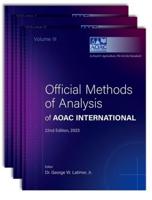Publisher's Synopsis
Excerpt from Bulletin United States Geological Survey, Issue 286, 1906
The field work on the area covered in this report was begun early in July, 1902, and continued throughout the summer. Early in September Mr. M. I. Goldman joined the writer and assisted in the areal mapping for one month. During the following winter the instrumental results were found to be too much in error for drawing structural contours at 20-foot intervals. Consequently in the spring of 1903 the field was again taken by the writer and Mr. F. G. Clapp, and the elevations on outcrops of the key strata previously determined by aneroid were checked by level. The results were surprising and gratifying. The larger part of this work was accom plished by Mr. Clapp, who also collected other geologic data and several hundred records of wells in Beaver and Allegheny counties. In August, 1903, the writer was transferred to western work, and his time has since been divided between two areas. The engraved topographic map of the Beaver area was finished in March, 1904. In the summer of 1904 Mr. Clapp spent a few days in obtaining special infor mation on the clay industries of Beaver quadrangle. This data has by correspond ence been brought up to date (may, and enlarged so as to cover most of Beaver County.
From Mr. M. R. Campbell, geologist in charge of fuels and other natural hydro carllons, the writer has received such oversight and criticism as makes mention of gratitude here totally inadequate. The preparation of the report has been facilitated by various courtesies Of the oil, gas, and clay companies Operating in this region. Special acknowledgment is due to Mr. R. R. Hice, of the Fallston Fire Clay Com pany, a member of the Pennsylvania Topographic and Geologic Survey Commission, for data on the New Sheffield gas field and other valuable information.
About the Publisher
Forgotten Books publishes hundreds of thousands of rare and classic books. Find more at www.forgottenbooks.com
This book is a reproduction of an important historical work. Forgotten Books uses state-of-the-art technology to digitally reconstruct the work, preserving the original format whilst repairing imperfections present in the aged copy. In rare cases, an imperfection in the original, such as a blemish or missing page, may be replicated in our edition. We do, however, repair the vast majority of imperfections successfully; any imperfections that remain are intentionally left to preserve the state of such historical works.










